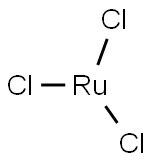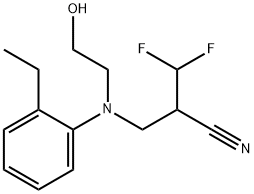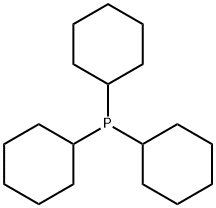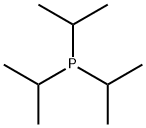Benzylidene-bis(tricyclohexylphosphine)dichlororuthenium
Synonym(s):Benzylidene-bis(tricyclohexylphosphine)dichlororuthenium;Bis(tricyclohexylphosphine)benzylidine ruthenium(IV) dichloride;Dichloro(benzylidene)bis(tricyclohexylphosphine)ruthenium(II);Grubbs Catalyst 1st Generation;Grubbs Catalyst M1a (C823)
- CAS NO.:172222-30-9
- Empirical Formula: C43H73Cl2P2Ru
- Molecular Weight: 823.96
- MDL number: MFCD01074452
- EINECS: 629-485-2
- SAFETY DATA SHEET (SDS)
- Update Date: 2023-12-13 16:54:32

What is Benzylidene-bis(tricyclohexylphosphine)dichlororuthenium?
Description
Phenylmethylenebis(tricyclohexylphosphorus)ruthenium dichloride is a ruthenium catalyst. Ruthenium catalysts are highly resistant to polar monomers, enabling the polymerization of many polar monomers to prepare cyclic olefin copolymers. Cyclic olefin copolymers can be widely used in the manufacture of various optical, information, electrical, and medical materials.
The Uses of Benzylidene-bis(tricyclohexylphosphine)dichlororuthenium
suzuki reaction
Properties of Benzylidene-bis(tricyclohexylphosphine)dichlororuthenium
| Melting point: | 153 °C (dec.)(lit.) |
| storage temp. | 2-8°C |
Safety information for Benzylidene-bis(tricyclohexylphosphine)dichlororuthenium
| Signal word | Warning |
| Pictogram(s) |
 Flame Flammables GHS02 |
| GHS Hazard Statements |
H228:Flammable solids |
| Precautionary Statement Codes |
P210:Keep away from heat/sparks/open flames/hot surfaces. — No smoking. |
Computed Descriptors for Benzylidene-bis(tricyclohexylphosphine)dichlororuthenium
| InChIKey | PNPBGYBHLCEVMK-UHFFFAOYSA-L |
New Products
3-N-BOC-(S)-AMINO BUTYRONITRILE 4-Piperidinopiperidine N-Benzyl-3-hydroxypiperidine 2-Methyl-4-nitrobenzoic acid 2-(4-bromophenyl)-2-methylpropanoic acid 4-Acetyl-2-methylbenzoicacid Acetyl-meldrum's acid Ethyl-4-Pyrazole carboxylate 2,6-Pyridinedimethanol 5,7-Dichloro-3H-Imidazo[4,5-B]Pyridine 5-Bromo-2-Methoxy-4-Methyl-3-Nitropyridine 2-Fluoro-5-Iodopyridine 2-Fluoro-5-Methylpyridine 2-Chloro-3-Bromo-5-Amiopyridine METHYL-4-(BUTYRYLAMINO)3-METHYL-5-NITROBENZOATE TRANS-CYCLOBUTANE-1,2- DICARBOXYLIC ACID 5-Nitro indazole R-(-)-5-(2-AMINO-PROPYL)-2-METHOXY-BENZENESULFONAMIDE 1,3-cyclohexanedione 4-Aminophenaethylalchol (S)-(+)-4-BENZYL-2-OXAZOLIDINONE 3-NITRO-5-ACETYL IMINODIBENZYL 4-FLUORO PHENYL MAGNESIUM BROMIDE 1.0 M IN THF 1-HYDROXY-4-METHYL6-(2,4,4-TRI METHYL PHENYL)-2-PYRIDONE MONO ETHANOL AMINE(PIROCTONE OLAMINE)Related products of tetrahydrofuran








You may like
-
 2-Bromo-5-Iodopyridine 73290-22-9 98%View Details
2-Bromo-5-Iodopyridine 73290-22-9 98%View Details
73290-22-9 -
 141-86-6 98%View Details
141-86-6 98%View Details
141-86-6 -
 4-Amino-2-Chloropyridine 14432-12-3 98%View Details
4-Amino-2-Chloropyridine 14432-12-3 98%View Details
14432-12-3 -
 16867-03-1 2-Amino-3-Hydroxypyridine 98%View Details
16867-03-1 2-Amino-3-Hydroxypyridine 98%View Details
16867-03-1 -
 766-11-0 5-Bromo-2-Fluoropyridine 98%View Details
766-11-0 5-Bromo-2-Fluoropyridine 98%View Details
766-11-0 -
 2,3-Diamino-5-Chloropyridine 25710-20-7 98%View Details
2,3-Diamino-5-Chloropyridine 25710-20-7 98%View Details
25710-20-7 -
 13466-41-6 98%View Details
13466-41-6 98%View Details
13466-41-6 -
 Ammonium HexachloropalladateView Details
Ammonium HexachloropalladateView Details
19168-23-1
Statement: All products displayed on this website are only used for non medical purposes such as industrial applications or scientific research, and cannot be used for clinical diagnosis or treatment of humans or animals. They are not medicinal or edible.